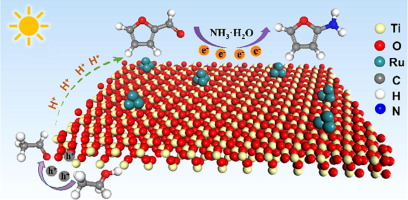18. Molecular nitrogen promotes catalytic hydrodeoxygenation
Duan, H., Liu, J., Xu, M., Zhao, Y., Ma, Xu, Dong, J., Zheng, X., Zheng, J., Allen, C., Danaie, M., Peng, Y., Issariyakul, T., Chen, D., Kirkland, A., Buffet, J., Li J.,* Tsang, S.* and O’Hare, D.*
Nat. Catal. 2019, 2, 1078-1087.
DOI: 10.1038/s41929-019-0368-6
Abstract
Although molecular dinitrogen (N2) is widely used as a carrier or inert gas for many catalytic reactions, it is rarely considered as a catalytic promoter. Here, we report that N2 could be used to reduce the activation energy for catalytic hydrodeoxygenation over ruthenium-based catalysts. Specifically, we report a 4.3-fold activity increase in the catalytic hydrodeoxygenation of p-cresol to toluene over a titanium oxide supported ruthenium catalyst (Ru/TiO2) by simply introducing 6 bar N2 under batch conditions at 160 °C and 1 bar hydrogen. Detailed investigations indicate that N2 can be adsorbed and activated on the metallic ruthenium surface to form hydrogenated nitrogen species, which offer protic hydrogen to lower the activation energy of direct carbonaromatic–oxygen bond scission and the hydrogenation of hydroxy groups. Thus, by employing different ruthenium catalysts, including Ru/TiO2, Ru/Al2O3, Ru/ZrO2 and Ru/C, we demonstrate that N2 promotion of hydrodeoxygenation can be regarded as a general strategy.



